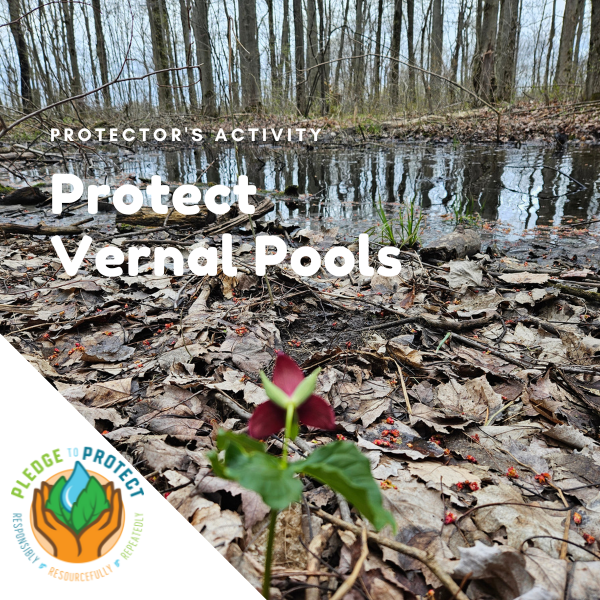What's The Issue?
Snow thaw and springtime rain create perfect conditions for vernal pools to develop. Typically found in the spring and fall or after heavy rainfall, vernal pools are shallow depressions that are intermittently or ephemerally filled with water without a flowing outlet.
Vernal pools provide essential habitats free of fish predators, support the lifecycle of amphibians, and serve as an important food source for wildlife. Learn more about plants and wildlife that depend on and live in vernal pools on the New York Natural Heritage Program website. Learn of interesting macroinvertebrates that you may encounter at vernal pools.
Since vernal pools only fill with water for a short period of time they are sensitive to conditions that change the availability of water such as climate change, and disturbances caused by human activities and invasive species. Invasive plants can lower ground table water levels making conditions too dry for vernal pools to develop altering these sensitive habitats and making them unsuitable for dependant wildlife.
What You Can Do to Help?
- Clean the tread of your shoes before hiking to avoid spreading plant seeds or other debris that could introduce an invasive species or pathogen to the area (shoe disinfection protocol)
- Protect vernal pool wildlife by keeping an eye out for Amphibian Migrations Road Crossings (AMRC) while traveling (learn about a volunteer-based AMRC project).
- Reach out to your local NYS Department of Environmental Conservation office to learn if a vernal pool you’ve encountered could be certified and protected.
Invasive Species To Watch Out For
The species showcased below are a few examples of invasives that could invade and impact vernal pool habitats (these are just some examples, as there are many other invasive species that could impact vernal pools).
Virtual Toolboxes
Visit the Protector’s Virtual Toolboxes below to access resources themed for each category, and to learn more about how to protect your favorite outdoor spaces from invasive species.
Lands & Trails
Lands & Trails
Forests
Waters
Gardens
Communities
Did you enjoy this blog post? Take our Pledge to Protect and get monthly emails showcasing actions you can take to protect your favorite hiking trails, paddleways, forests, garden, and community from the impacts of invasive species!
Take the Pledge to Protect
The Pledge-to-Protect is a fun, positive, inviting, engaging and rewarding way to participate in invasive species prevention and management.
|
|



